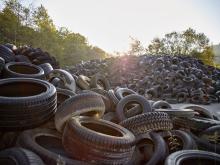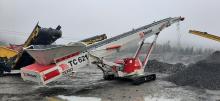
The Ash Grove Cement plant in Chanute, Kansas, USA, can produce up to 1,476,000 tonnes of clinker per year. When operators experienced several frustrating involuntary shutdowns and rising costs from drifting and mistracking conveyor belts, prevention-minded managers sought an effective solution.
“Although there was one belt that had a particular issue with tripping the emergency stop switch, mistracking was a problem on several belts from the limestone quarry all the way to the raw mill,” said Danny Wolken, maintenance planner at Ash Grove Chanute. “We have different materials converging into a single area, and disruption to the flow affects the productivity of the whole system.”
Various materials from the storage dome are carried approximately 350 metres on eight belts to the raw mill for mixing and insertion into the preheater for calcining in the kiln. With an average belt width of 914mm running at 1.9 metres per second, the system transports 453 tonnes per hour of material. The outdoor conveyors are covered to protect cargo from the variable Kansas weather patterns.
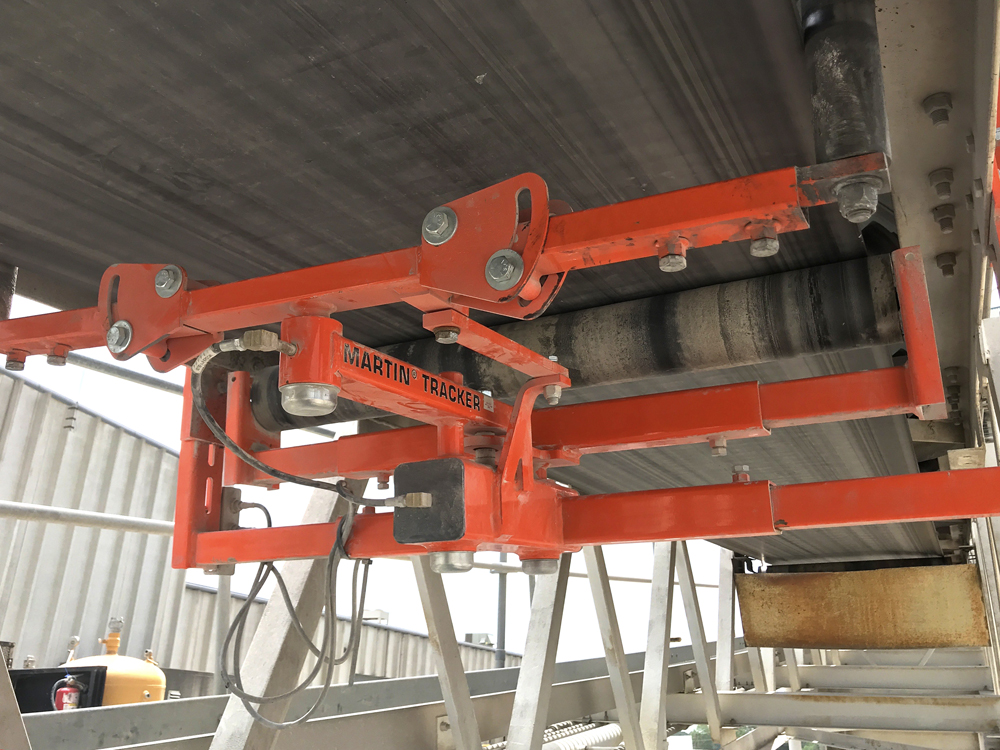
The belt carrying -100mm limestone was particularly prone to belt drift. Off-centre loading caused spillage along the length of the system until the belt activated the stop switch. “This one conveyor hit the stop switch 26 times last year, for a total of 17 hours of downtime,” Wolken explained. “Although the limestone conveyor had the worst problems, issues with tracking stretched across all eight conveyors. That adds up.”
Along with excessive unscheduled downtime, the belt on the limestone conveyor began to fray from contact with the stringer, eventually requiring replacement. Adding to the problem, every 45 days, workers dedicated about 50 hours to clean around all eight systems.
Martin Engineering technicians found:
- When the belt drifted, spillage dropped along the entire length of the system, causing product loss, creating potential workplace safety issues, and requiring excessive clean-up
- Potential manufacturing belt flaws causing it to bow or camber [Fig.1]
- Extreme temperatures and high Kansas winds cause components to expand and contract, contributing to drift
- Belt manufacturing issues may have also contributed to the “cupping” (belt curling on either edge) observed by the technicians
- Existing belt alignment systems were inadequate
“Across the eight conveyors, we recommended installing 28 Martin Trackers,” said Martin Engineering territory manager Cory Goldbeck. “Many of the units control the belt return, but there are also upper trackers strategically placed in problem areas.”
Utilising innovative technology, the Martin Engineering Tracker has two sensing arms that extend out to either side of the conveyor with rollers at the tip, which smoothly ride the edges of the belt. The sensing arms detect slight variations in alignment and use the force of the belt to immediately pivot the position of the troughed idlers against the misalignment with equal force, thus returning the belt to its intended path. [Fig.2]
The return side trackers have a flat roller with a polyurethane coating. Raised slightly above the belt plane, the roller acts partly as support with just enough downward force from the belt for the polyurethane to grip the belt and return it into alignment.
Two Martin Engineering technicians did the installation during scheduled downtime. Three critical areas on the conveyor required tracking: the exit of the settling zone, the entrance to the feed mill and along the return path. An upper troughed tracker at the settling zone exit reinforces a straight belt path as it travels the length of the system. A lower tracker placed near the loading zone ensures the belt is aligned as it hits the tail pulley to promote centred loading.

Initial testing revealed positive results, with the belts remaining centred from pulley to pulley, drastically reducing spillage. Operators noted a significant reduction in labour and clean-up time.
After a year, the belt remained aligned through weather changes, and none of the belts have triggered the emergency stop switches since the installation. This resulted in a significant reduction in unscheduled downtime, improved efficiency, and reduced labour for clean-up.
“We trusted Martin Engineering would offer an affordable solution that could solve our problem, and they really came through,” Wolken concluded. “We like the trackers, so we’re looking into installing them on other systems. They have definitely paid for themselves.”
Metso Outotec introduced a new range of overland conveyors for bulk materials transport in 2019. The company is currently highlighting the benefits of its eight Nordtrack mobile stacker conveyors for quarrying and mining customers.
The range includes the Nordtrack CT20 and CT24 track-mounted models for European and rest of the world sales and for North American supply the Nordtrack CT85, CT85R, CT100 and CT100R track-mounted units and the Nordtrack CW85 and CW100 wheel-mounted models.
Metso Outotec says it considers these conveyors as critical to the further development of process flexibility and complexity when using track-mounted equipment in a wider combination together. They allow the linking of multiple pieces of equipment in both open and closed circuits which is required when looking to manufacture premium aggregate products.

“It is a real step forward and proven by the fact that Nordtrack conveyors make up more than one third of the Nordtrack range sales volumes,” says Vesa Tuloisela, director, Nordtrack offering, Metso Outotec. “Moreover, we have seen a clear trend of supplying full packages of mobile crushers and screens together with the auxiliary conveyors to fulfil the plant requirements.”
The Nordtrack mobile stacking conveyors come in different lengths depending on the plant requirements. The European-built models CT20 and CT24 come in belt lengths of 19.4m and 23.5m respectively and fit in a container for easy and cost-feasible transport. The North American-built models are in lengths of 24.4m (80ft) and 30.5m (100ft). Metso Outotec says that creating higher stockpiles makes plant efficiency better as wheeled loader total utilisation can be maximised.
“Another big benefit for using mobile stacking conveyors are them being such a cost-effective alternative to wheeled loaders consuming significantly less fuel, parts and man hours as no added operator is required anymore,” says Tuloisela. “Also less traffic on site makes it safer for any operators and visitors to walk around.”
Nordtrack conveyors are typically mostly suited to stacking and conveying duties in aggregates production, but are often also utilised in other recycling and material handling applications in quarrying and mining production.
All eight of Metso Outotec’s Nordtrack mobile stacker conveyors come with a large feed hopper and are easily transportable on site or between production sites. All units are also said to be easy to service and feature an efficient diesel engine. The conveyors all have remote controllers for easy and safe operating of the units, and there is a wide range of different added options to choose from for best serving any application.
Metso Outotec says conveyors are also a key element of its new in-pit crush and convey (IPCC) solutions, providing an integrated mining and quarrying customer solution consisting of crushing, conveying, and stacking equipment combined with IPCC planning and lifecycle services.
The company adds that the offering has been designed to ensure the highest productivity, energy efficiency, as well as maintainability. Metso Outotec IPCC solutions are also a part of the company’s Planet Positive portfolio.
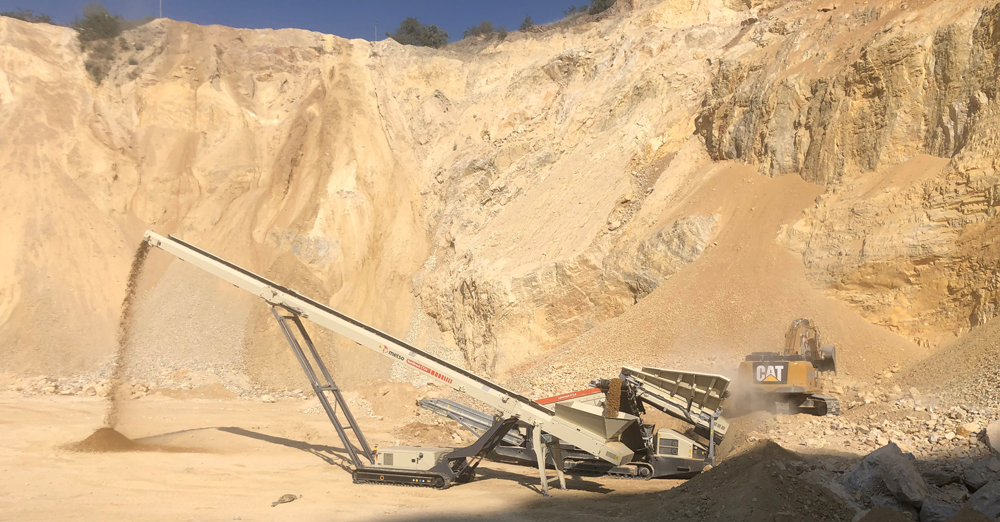
The Planet Positive portfolio focuses on the most impactful technologies in Metso Outotec’s current portfolio, specifically responding to the sustainability requirements of its customers in the aggregates, mining and metals refining industries. Claiming to have the widest range of mobile conveyors in the international marketplace, Northern Ireland-based Telestack is a stalwart of the industry with over 35 years in the business.
The company says much of the recent demand it is seeing has been in the high-spec aggregate stacker offering with throughputs ranging up to 2,000tph. Custom-designed by experienced engineers to suit the application and the project lifecycle, the Telestack stackers are designed with high-spec componentry where safety and compliance are key.
Commenting on the surge in demand for higher spec stockpiling conveyors, international sales manager Padraig McDermott said: “Aggregate giants such as Aggregate Industries, Cemex or Heidelberg know exactly what their operation needs and Telestack’s reputation in this field makes us the go-to supplier for this type of stacker. Our ability to offer a customised solution that integrates fully into their aggregate processing plant, whilst sustaining the high tonnages required, has seen Telestack gain a well-earned reputation in this field.”
Telestack offers a range of stationary stacking conveyors, radial stacking conveyors, radial telescopic and mobile stacking conveying solutions for both primary applications typically working after a primary jaw or stacking as part of an integrated processing plant. Each particular solution is dependent on the tonnage, installation requirements, material characteristics and application.
Units working after a primary jaw for example, are designed to withstand large lump-sized product and will include suitable wear liners, impact beds, fall breaks and heavy duty belting etc. These units perform under the toughest conditions (dust and dirt, heat, moisture and extreme temperatures) and are built robustly to withstand these extremes. The units are also designed with maintenance in mind and with ease of access incorporated into the design.
The stacker that needs to integrate into an aggregate processing plant for, example, will need to have commonality of parts and it is critical to the customer, for serviceability and support reasons, that they specify certain components as part of the design process. Telestack says its experienced sales, design and electrical engineering teams will work very closely with the client in this case to configure their solutions to their exact organisational and operational needs and offer support throughout. This level of bespoke design will also incorporate conformance with local and governmental health and safety and environmental standards.
McDermott explains: “Telestack offer a level of customisation that is relatively unmatched in the business and it is this level of personalisation that makes us so successful in this space. We have seen a real surge in electrical sophistication for example and we have a growing electrical team dedicated to ensuring that the Telestack unit can fully integrate into the processing system successfully.
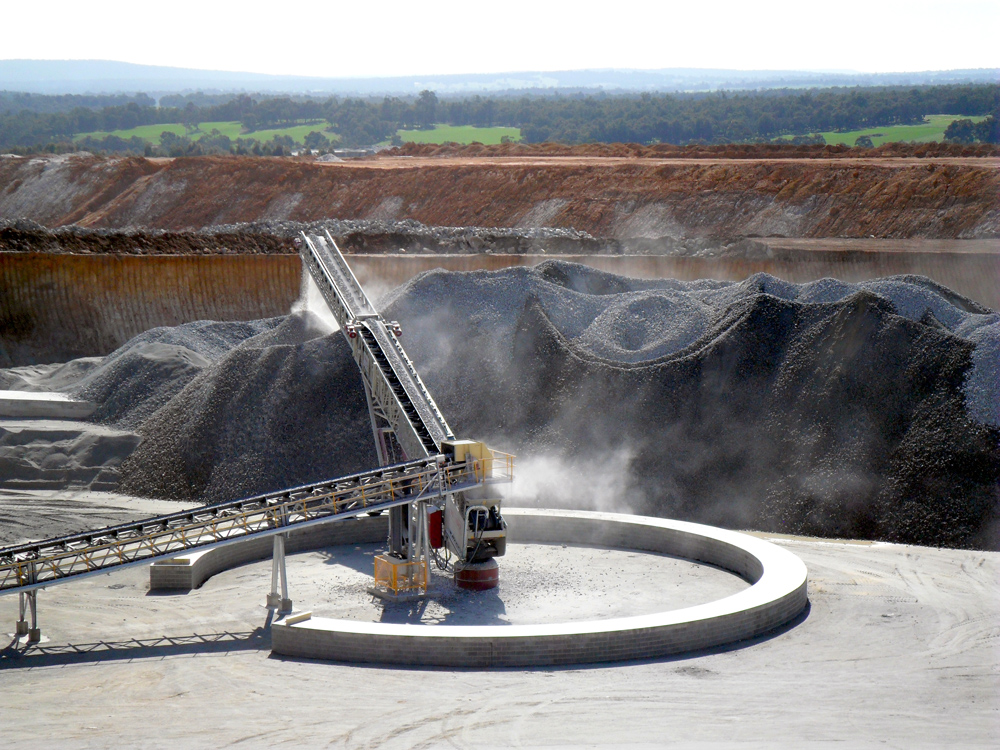
“The operator, who will have to manage several different units as part of the plant for example, will need to have the ability to monitor and control the plant from a single location. The Telestack electrical team is continually invested in working with the client to meet and exceed their electrical needs. This personalisation also extends to guarding, handrails, dust containment and much, much more!”
In addition, Telestack says its customers are also benefitting from the support from the company’s Helpdesk. It, with the help of the optional integrated Telematics feature, can support the operation to remotely help troubleshoot any issue in real time. This provision has proven invaluable in the current climate where Covid-related restrictions have prevented travel and access to some sites and operations have benefitted greatly from having the additional support from Telestack remotely.
There is also a full range of power options available which give the owner/operator/contractor the flexibility to power their Telestack solution in various ways (diesel hydraulic, electric, dual power or hybrid). Traditionally, in primary applications where mobile jaws are used, the power source for both the jaw and stacker has been diesel hydraulic. However, with the trend moving towards zero-emission production, Telestack has seen an uptake in Dual Power or Hybrid options depending on the operation. The stackers used as part of a processing plant have always tended to be electric and Telestack has invested heavily in its electrical team to fully support its customers in this area.
The engineering acumen within Northern Ireland is renowned globally and Telestack says the expertise within the company has grown and developed significantly. It adds that its equipment is involved in some of the most ground-breaking, exciting and forward-thinking projects across the globe with the company gaining serious traction in other industries such as rail, power, cement and steel plants.



